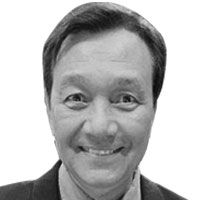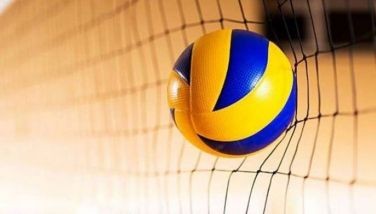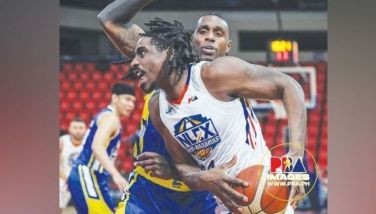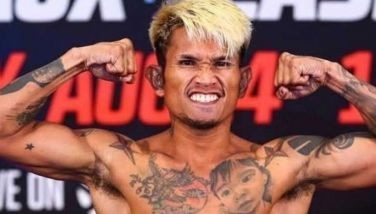Pinoy boxing icons

Boxing News, a weekly magazine out of London established in 1909, published a magazine a few years ago listing the 100 greatest boxers of all time as picked by a team of eight fight writers and historians.
It’s probably the most conclusive list of ring greats ever but there was a glaring omission. Flash Elorde, who reigned as world junior lightweight champion for over seven years, was not in the roster even if the man he once beat in Manila, Sandy Saddler, took the No. 18 spot. Elorde ruled the 130-pound division from 1960 to 1967. He beat Saddler by a unanimous 10-round decision at the Rizal Memorial Stadium in 1955 with round scores of 8-1, 7-3 and 8-2. In a rematch a year later at the Cow Palace in San Francisco, referee Ray Flores stopped it in the 13th round as blood spewed out of an ugly cut over Elorde’s eye with Saddler ahead on points, 67-65 on the three judges scorecards. Saddler was booed lustily by the crowd for his dirty tactics that included elbowing and butting.
Elorde campaigned for 20 years from 1951 to 1971 and finished with a record of 89-27-2, including 33 KOs. Twice, he attempted to annex the world lightweight crown and twice, he was repulsed by Carlos Ortiz on 14th round knockouts at the Rizal Memorial Stadium in 1964 and Madison Square Garden in New York City in 1966. Elorde died at the age of 49 in 1985 due to lung cancer. Surely, Elorde deserved to be cited for his long tenure as world champion and the honor he brought not only to the Philippines but also to Asia.
In the list of 100, only five Asians were recognized. Manny Pacquiao was No. 42, a rung below Floyd Mayweather. Perhaps, he could’ve been ranked higher. After all, no fighter in history has collected world titles in eight different divisions except Pacquiao.
Here’s what Boxing News wrote about Pacquiao: “He’s moved up effortlessly through the weights from flyweight to superwelterweight, inflicting damage and famous defeats at every stop along the way. Pacquiao has thrilled fans the world over with his all-action style and he has captured the imagination of his countrymen who worship the man who has claimed some form of title recognition in an incredible eight weight divisions. They say crime stops in the Philippines when he fights as everyone comes together to watch him in action and it’s then when the punishment – in the ring – begins.”
Pacquiao was ranked higher than No. 46 Salvador Sanchez, No. 48 Ricardo Lopez, No. 71 Mike Tyson, No. 74 Pascual Perez, No. 78 Juan Manuel Marquez, No. 79 Marco Antonio Barrera, No. 80 Erik Morales and No. 86 Oscar de la Hoya.
Flyweight Jimmy Wilde, who was dethroned by another Filipino Pancho Villa in 1923, was ranked No. 8. Others who were ranked ahead of Pacquiao and maybe should’ve been ranked lower were No. 9 Willie Pep, Saddler, No. 24 Pernell Whitaker and No. 28 Eder Jofre. The top 10 fighters were No. 1 Sugar Ray Robinson, No. 2 Muhammad Ali, No. 3 Henry Armstrong, No. 4 Joe Louis, No. 5 Sugar Ray Leonard, No. 6 Roberto Duran, No. 7 Harry Greb, No. 8 Wilde, No. 9 Pep and No. 10 Archie Moore.
After Pacquiao, the next highest ranked Asian fighter was No. 57 Khaosai Galaxy of Thailand. Galaxy compiled a record of 49-1, with 43 KOs. He was the WBA superflyweight champion for over seven years and made 19 defenses up to his retirement in 1991.
The third highest ranked Asian was No. 84 Myung Woo Yuh of South Korea who made 17 defenses of his WBA lightflyweight title from 1985 to 1991. Yuh’s record was 38-1, with 14 KOs. His only loss was to Japan’s Hiroki Ioka by split decision in 1991 but he reversed it in a rematch via a majority verdict.
Villa was the fourth highest ranked Asian at No. 89 but deserved to be ranked much higher, certainly higher than Yuh. His record was 73-5-4 with 22 KOs and 23 no-decisions. He took the world flyweight crown from Wilde before 23,000 fans at the Polo Grounds in New York in 1923. Wilde was paid a whopping $65,000 purse for the fight. Boxing News reported: “For a time, he held his own but by the sixth round, he was cut and struggling. The demon-like Villa poured in the punches in the seventh and the little Welshman finally crashed to the canvas unconscious. He was badly hurt and couldn’t return to Britain for a week.” It was Wilde’s last fight. Villa died of Ludwig’s Angina at the age of 23 in San Francisco in 1925 and his body was brought back to Manila where thousands lined the streets for his funeral procession.
The fifth Asian in the cast was Chang Jung Koo of South Korea. He had a record of 38-4, with 17 KOs. Chang ruled as WBC lightflyweight champion from 1983 to 1989 and registered 15 defenses. There was no Japanese fighter named in the top 100.
This year, Boxing News named three Filipino ring legends in a special issue honoring the best fighters in 30 countries. They were Pacquiao, Elorde and Villa. Pacquiao was hailed as “one of the greatest fighters of the modern era.” Elorde was described as “one of the top boxers to come out of Asia...made 10 successful defences at superfeatherweight and was a national hero in the Philippines...the Elorde Sports Center in Paranaque City was dedicated to him in 1983, two years before his death.” Villa was cited as “arguably the greatest Asian boxer that has ever lived...had a relentless attacking style which endeared him to American fans and will arguably be most remembered for ending Brit Jimmy Wilde’s career.” Elorde and Villa are enshrined in the International Boxing Hall of Fame.
- Latest
- Trending































